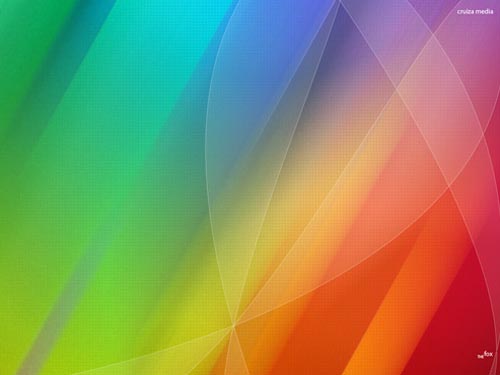Rainbow Wallpapers
The U-2 was developed by Lockheed Aircraft Corporation for the CIA to perform reconnaissance overflights of the Soviet Union. Project director Richard M. Bissell assured President Dwight Eisenhower that the aircraft's high altitude (70,000 feet) would render it invisible to Soviet radars. However, the earliest flights, in July 1956, were in fact tracked. On 5 July, an A-100 radar detected Carmine Vito as he flew over Smolensk, en route to Moscow. The operators even calculated his altitude as twenty kilometers (65,000 feet), which was later rejected by experts who did not believe that an aircraft could fly that high. SA-1 missiles were not kept at the air defense sites around Moscow, and no intercept was attempted.

and Rainbow Wallpapers

and Rainbow Wallpapers
In mid-August, Bissell assembled a group of advisors to begin work on solving the tracking problem. Among the group were Edwin H. Land, founder of the Polaroid Corporation and head of Project Three the Technological Capabilities Panel; Edward Purcell, a Nobel laureate physicist from Harvard; and Clarence L. "Kelly" Johnson, head of Lockheed Advanced Development Projects (ADP)—the Skunk Works.

Radial Rainbow by dewaynesmith
The group conducted initial discussions. Then Land went to the MIT Lincoln Laboratory to recruit radar specialists for the work. The leader of the Lincoln Lab team was Franklin Rodgers, associate head of the radar division. Working in isolation from the rest of the lab, his group began trying to find ways to reduce the U-2's radar cross section. As their work progressed, they traveled to California to work with Lockheed and to various military bases to perform radar measurements of U-2s in flight.

Starsfield Rainbow wallpaper
Lockheed developed their own expertise in RCS techniques. A small group headed by L. D. MacDonald included chemist Mel George, physicist Edward Lovick, and other scientists and engineers.

Rainbow Wallpapers (Wallpaper

Digital Rainbow Wallpapers
The radar cross section (RCS) of an object is a measure of how much electromagnetic (EM) energy is reflected by an object, expressed as an area, typically square meters. The RCS of an object is a function of the object's size, shape, and materials. It also varies depending upon the frequency of the EM energy. Because long distance search/acquisition radars use different frequencies than short range fire control radars, a variety of techniques would have to be used to protect the U-2.

and Rainbow Wallpapers

and Rainbow Wallpapers

Photo: Rainbow in purple sky
All parts of the aircraft created reflections—the fuselage, tail, wings, engine inlets and exhaust. The anti-radar techniques investigated fell into two categories, either absorbing the radar energy or creating reflections that interfered with the reflections from the aircraft.

1024x768 Rainbow ocean desktop

Photo: Rainbows over tundra
Purcell's first concept was an absorber material to be placed on the U-2's fuselage. Developed by the Lincoln Lab team and Lockheed, it became known as "Wallpaper." It consisted of a conductive pattern printed on a flexible sheet that was then adhered to the aircraft. It was intended to be effective against the higher frequency radars.

and Rainbow Wallpapers

Rainbow Wallpapers (Wallpaper

Rainbow Paint Wallpaper

Colour Rainbow Wallpaper

rainbow \x26middot; rainbow wallpaper

and Rainbow Wallpapers

and Rainbow Wallpapers
In mid-August, Bissell assembled a group of advisors to begin work on solving the tracking problem. Among the group were Edwin H. Land, founder of the Polaroid Corporation and head of Project Three the Technological Capabilities Panel; Edward Purcell, a Nobel laureate physicist from Harvard; and Clarence L. "Kelly" Johnson, head of Lockheed Advanced Development Projects (ADP)—the Skunk Works.

Radial Rainbow by dewaynesmith
The group conducted initial discussions. Then Land went to the MIT Lincoln Laboratory to recruit radar specialists for the work. The leader of the Lincoln Lab team was Franklin Rodgers, associate head of the radar division. Working in isolation from the rest of the lab, his group began trying to find ways to reduce the U-2's radar cross section. As their work progressed, they traveled to California to work with Lockheed and to various military bases to perform radar measurements of U-2s in flight.

Starsfield Rainbow wallpaper
Lockheed developed their own expertise in RCS techniques. A small group headed by L. D. MacDonald included chemist Mel George, physicist Edward Lovick, and other scientists and engineers.

Rainbow Wallpapers (Wallpaper

Digital Rainbow Wallpapers
The radar cross section (RCS) of an object is a measure of how much electromagnetic (EM) energy is reflected by an object, expressed as an area, typically square meters. The RCS of an object is a function of the object's size, shape, and materials. It also varies depending upon the frequency of the EM energy. Because long distance search/acquisition radars use different frequencies than short range fire control radars, a variety of techniques would have to be used to protect the U-2.

and Rainbow Wallpapers

and Rainbow Wallpapers

Photo: Rainbow in purple sky
All parts of the aircraft created reflections—the fuselage, tail, wings, engine inlets and exhaust. The anti-radar techniques investigated fell into two categories, either absorbing the radar energy or creating reflections that interfered with the reflections from the aircraft.

1024x768 Rainbow ocean desktop

Photo: Rainbows over tundra
Purcell's first concept was an absorber material to be placed on the U-2's fuselage. Developed by the Lincoln Lab team and Lockheed, it became known as "Wallpaper." It consisted of a conductive pattern printed on a flexible sheet that was then adhered to the aircraft. It was intended to be effective against the higher frequency radars.

and Rainbow Wallpapers

Rainbow Wallpapers (Wallpaper

Rainbow Paint Wallpaper

Colour Rainbow Wallpaper

rainbow \x26middot; rainbow wallpaper

0 Comments:
Post a Comment
Subscribe to Post Comments [Atom]
<< Home